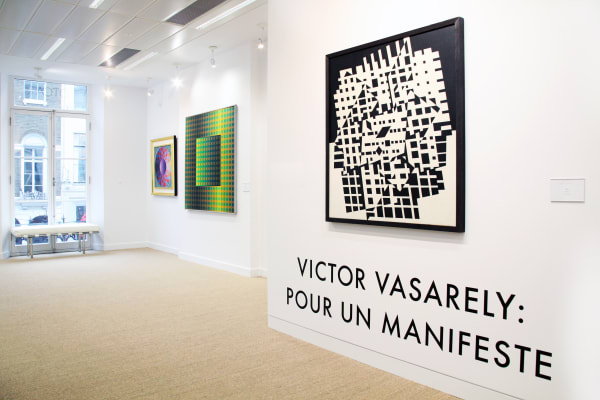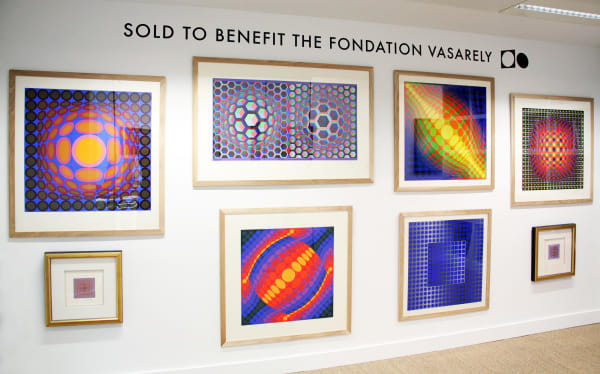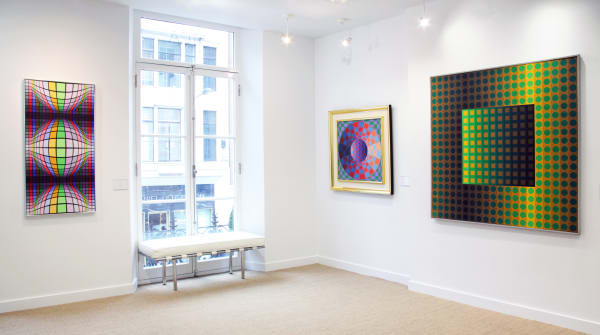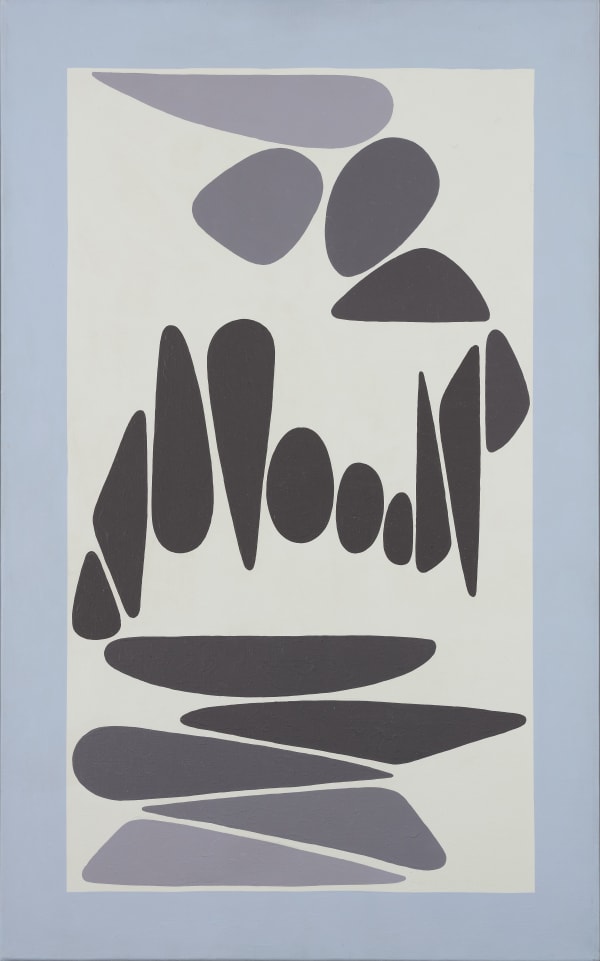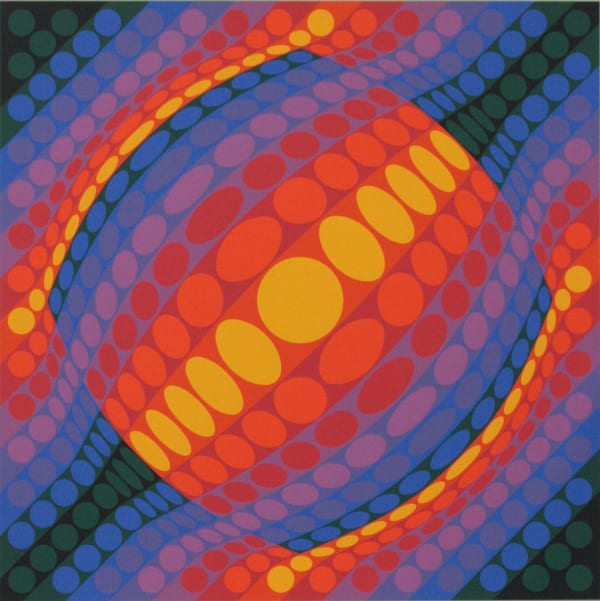Victor Vasarely: Pour un Manifeste
This February, in collaboration with the Fondation Vasarely, Omer Tiroche Contemporary Art presents a survey of works by the ‘Father of Op Art’ Victor Vasarely. Coinciding with the 110th anniversary of the artist’s birth, and marking 40 years since the inauguration of his foundation, Pour un Manifeste spans Vasarely’s career from the early abstracts of the 1950s right up until the end of his working life.
The exhibition takes inspiration from Vasarely’s controversial Notes Pour un Manifeste, first published in 1955 alongside a group exhibition held at the Galerie Denise René, Paris. Printed on bright yellow paper, the Manifeste Jaune questioned the roles of viewer and artist with new theories of kinetic plasticity and ‘Art for All’. Closing the distance between a modern consumer society and ‘high’ art, Vasarely placed emphasis on active participation from an observer, suggesting the potential for different images to be seen from all viewpoints.
Vasarely’s philosophy continued the work of the Cubists before him, seeking to reinvent our relationship with space and movement. Trained in formal sciences and later in classical painting, the artist combined the two in order to transcend the limits of both, making significant contributions towards scientific and mathematical research. His dizzying geometric designs would lead to developments in neuroscience, quantum physics and experimental psychology; later on the elaborate ‘Plastic Alphabet’ would pioneer a form of coding, well before the existence of a personal computer.
Drawing inspiration from shapes around him – a sea worn pebble or the lines of an old building – Vasarely composed blueprint type instruction leaflets systematically on paper by hand. These ‘programmations’ were used to explore infinite permutations of colour combination, pattern and distortion, with the artist eventually employing assistants to reproduce the prototypes as paintings, serigraphs, tapestries and murals. Taken from their original context in our digital culture, the genius of these paintings can be overlooked, yet the painstakingly detailed programs preceding them prove that Vasarely was a visionary ahead of his time.
As one of the most important pioneers of post war art, Victor Vasarely anticipated and eventually fostered the Op Art movement that would sweep across Britain and America. To see his work up close is to enter an ocular circus of tunnels and mazes; black holes that vacuum you in, ballooning squares that push you out, resulting in an unsettling sensation of vertigo. The shifting perspectives appeal to our universal fascination with illusion and reality; a sleight of hand that hacks into the mysterious circuitry of awareness and interpretation, reminding us that seeing is not always believing.
-
 Victor VasarelyOtami, 1953-89Acrylic on canvas64 x 40 cm.
Victor VasarelyOtami, 1953-89Acrylic on canvas64 x 40 cm.
25 3/16 x 15 ¾ in.€ 65,000.00 -
 Victor VasarelyPositive and Negative, 1956Collage55 x 26.5 cm. each
Victor VasarelyPositive and Negative, 1956Collage55 x 26.5 cm. each
21 ⅝ x 10 7/16€ 40,000.00 -
 Victor VasarelyUZOK 2, 1956Collage44 x 28 cm each.
Victor VasarelyUZOK 2, 1956Collage44 x 28 cm each.
17 5/16 x 11 in.€ 40,000.00 -
 Victor Vasarely - PrintsPlaneta, 1975Serigraph77.9 x 77.9 cm.
Victor Vasarely - PrintsPlaneta, 1975Serigraph77.9 x 77.9 cm.
30 11/16 x 30 11/16 in.27 of 50$ 2,200.00




